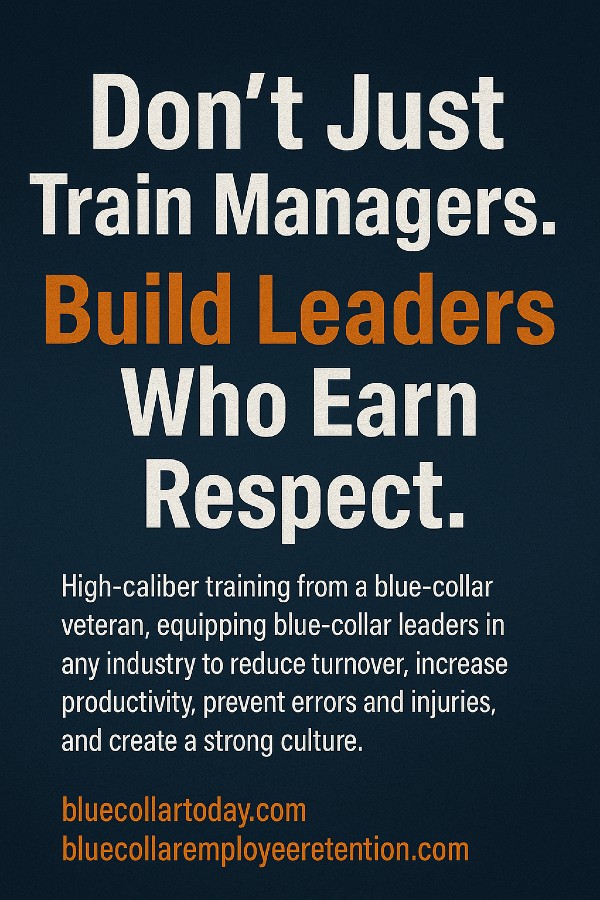
Culture Is the Hidden Gear That Drives Productivity, Safety, Quality, and Efficiency
In manufacturing, steel, construction, logistics, and the skilled trades, we spend a lot of time talking about performance metrics.
We track output. We monitor safety incidents. We chart defects per million and downtime. We slice and dice efficiency with lean principles, Six Sigma, and just-in-time logistics.
But too often, we overlook the one factor that silently powers—or poisons—all of those numbers:
Culture.
Culture isn’t just about how people feel. It’s about how people perform. And whether you’re running a steel mill, a machine shop, a warehouse, or a heavy equipment crew, the culture on your floor determines whether your business runs lean or bleeds profit from every shift.
1. Culture and Productivity: How People Work When Nobody’s Watching
In a high-performance culture, people show up early, stay focused, and take pride in doing it right the first time.
In a toxic culture, people just show up. They do the minimum. They coast.
Culture dictates whether team members:
- Communicate clearly and help each other—or stay in their own lane and ignore issues
- Think ahead and solve problems—or wait until management steps in
- Treat the company’s time and tools with respect—or just punch the clock and go home
Want better productivity?
Build a culture where people are engaged, appreciated, and challenged.
People don’t give extra effort to companies – they give it to leaders and teams they believe in.
2. Culture and Safety: The Attitudes Behind the PPE
You can have the best safety procedures in the world, but if your culture is “get it done no matter what,” someone’s going to get hurt.
In a strong safety culture:
- Workers speak up when something doesn’t look right
- Supervisors listen and act on concerns
- Shortcuts are the exception, not the norm
In a weak culture:
- Safety is “somebody else’s job”
- Near-misses go unreported
- New hires aren’t coached—they’re just thrown into the mix
Every incident is a culture indicator. If people feel rushed, dismissed, or unsupported, they stop following procedures—even if they know better.
Want fewer injuries? Build a culture where doing it safely is doing it right.
3. Culture and Quality: The Invisible Standard
Quality is more than a process: It’s a mindset.
No checklist can replace a team member who takes personal pride in their work.
In high-trust, high-culture environments:
- Mistakes are caught early because people care about the end result
- Peer accountability is strong—no one wants to let the team down
- Continuous improvement isn’t a buzzword—it’s the way people think
In low-culture environments:
- Defects are hidden or ignored
- “Good enough” becomes the standard
- Rework piles up and customers feel it
Quality is a direct reflection of how much your people believe their work matters.
4. Culture and Efficiency: Where Waste Lives
Efficiency dies in cultures full of fear, frustration, and finger-pointing.
When people don’t trust each other—or leadership—they don’t collaborate, innovate, or adapt.
That leads to:
- Slower changeovers
- More miscommunication
- Longer downtime and missed signals
- Wasteful processes kept alive by apathy
In contrast, in a healthy culture:
- Teams solve problems fast
- Downtime becomes learning time
- Feedback flows freely
- Front-line workers suggest the best ideas—because they’re closest to the work
Want leaner, smoother operations? Build a culture where people own their processes, not just follow orders.
Culture Is the Foundation, Not a Perk
Culture is not an HR initiative.
It’s not pizza parties or slogans or annual surveys.
It’s the behavior your company tolerates, the attitude your managers model, and the experience your workers live every day.
You can’t demand performance from the top if you don’t build culture from the bottom.
That starts with leadership.
- Are your supervisors trained to lead, or were they just promoted?
- Do your managers know how to engage people, or just enforce rules?
- Is your team motivated by pride—or just pressure?
Final Word: If You Want the Numbers, Start with the Culture
Productivity. Safety. Quality. Efficiency.
All of these are outputs. Culture is the input.
You can’t fix what’s downstream if what’s upstream is broken.
At Blue Collar Today and Blue Collar Employee Retention, we work with companies who are ready to fix it at the source – by equipping the leaders closest to the floor with the tools to lead well, inspire consistently, and retain great people.
Because when the culture is right, the numbers will take care of themselves.
Jeremy L. Davis
25-Year Blue-Collar Leadership Coach
Founder, Blue Collar Today & Blue Collar Employee Retention





